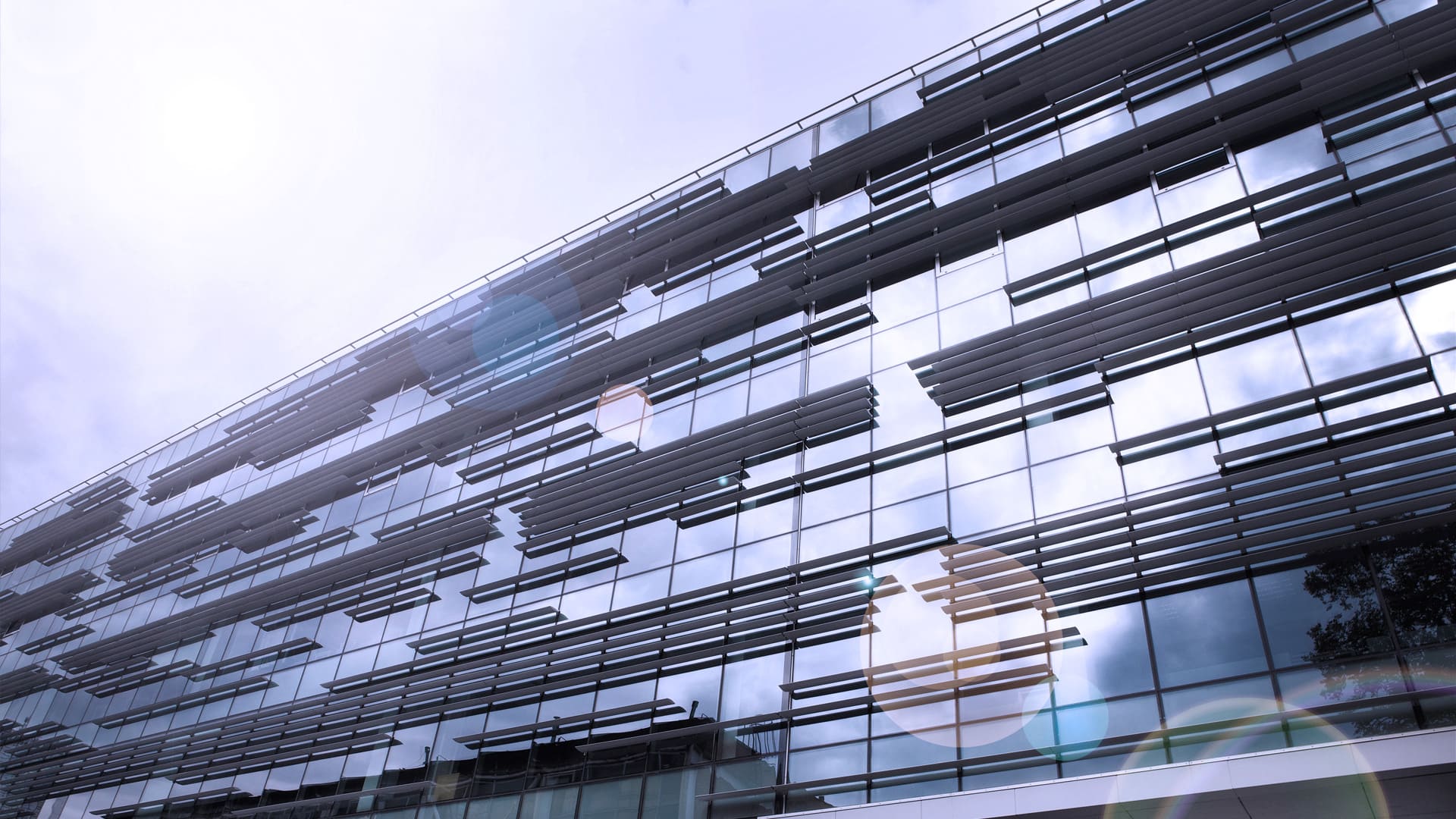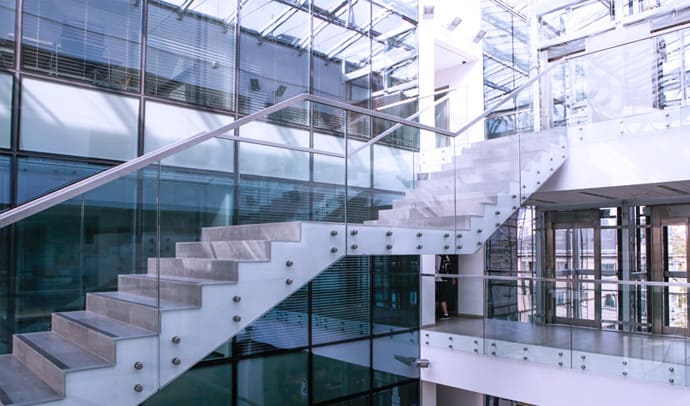In the centre of Warsaw, in the middle of a campus of the Warsaw University of Technology, situated is MINI, the building of the Faculty of Mathematics and Information Science. It is surrounded with historical buildings designed by the famous Stefan Szyller and Czesław Przybylski. In the limited area of the campus, there are two neo-baroque and modernistic buildings with facades made of plaster or bare brick. They vary regarding their scale, volume and time of building. In this complicated context, we were to design a new seat of the faculty.
The building is light, completely neutral and transparent, and sometimes it is difficult to determine where it starts and ends. Glazed in its entirety, it reflects silhouettes of historical buildings.

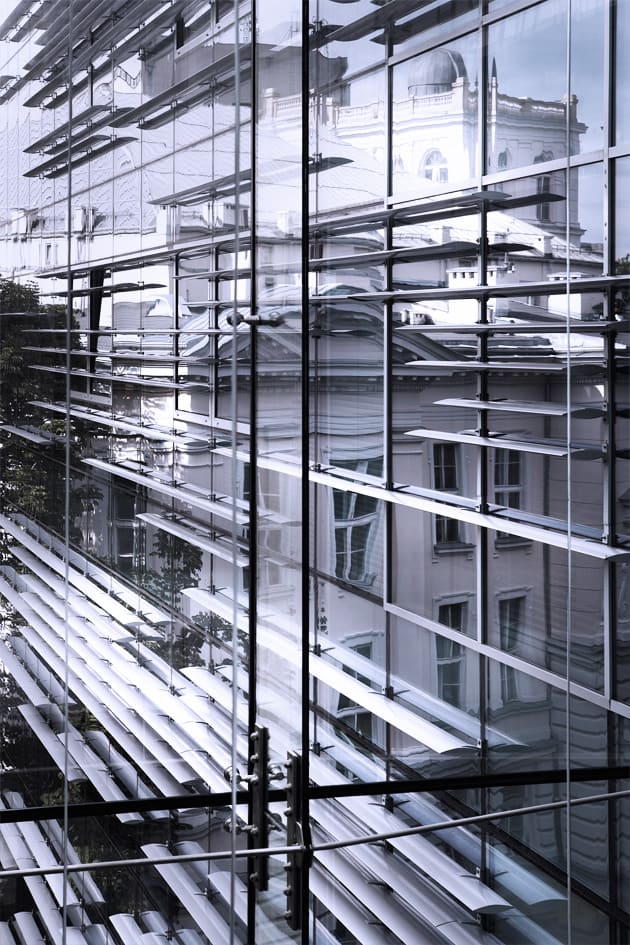
Glazed facades proved to be very suitable for the interior. They improve the work comfort, provide a lot of natural light, and open views for dense green. The transparency of the building gives its users a sense of complete integration with the surrounding, and at the same time it helps reading spatial relations of the entire campus. It provides a sense of being inside and outside at the same time.
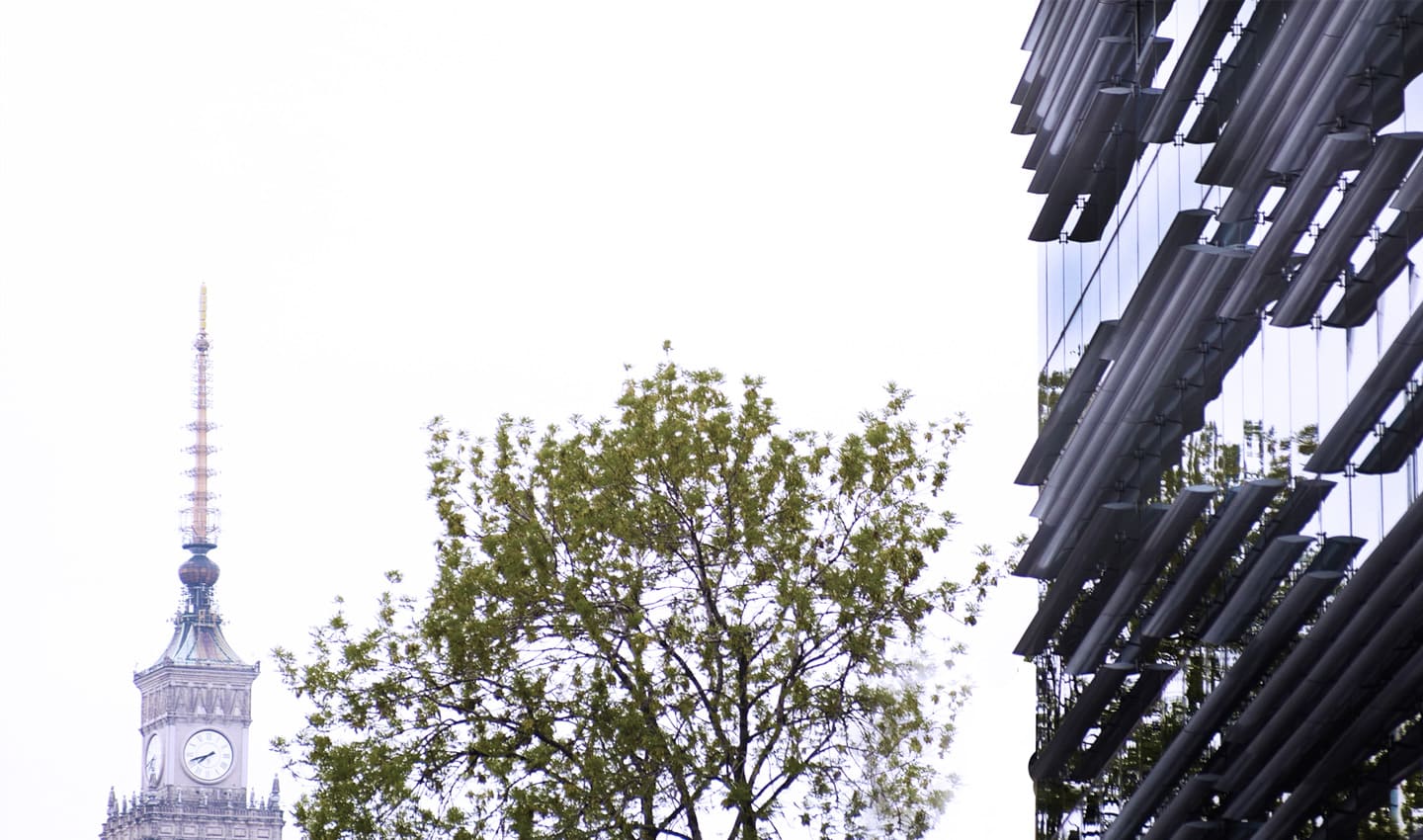

The western façade is adjusted to the surrounding with the reflection of neighbouring modernistic buildings made of brick and have symmetrical spacing of windows. The shape of the building has uniform and cohesive nature. Large plane trees and listed nature monuments survived the building process. Therefore, the majority of views through facades glazed from the floor to the ceiling are very soothing comprising green and historical monuments.
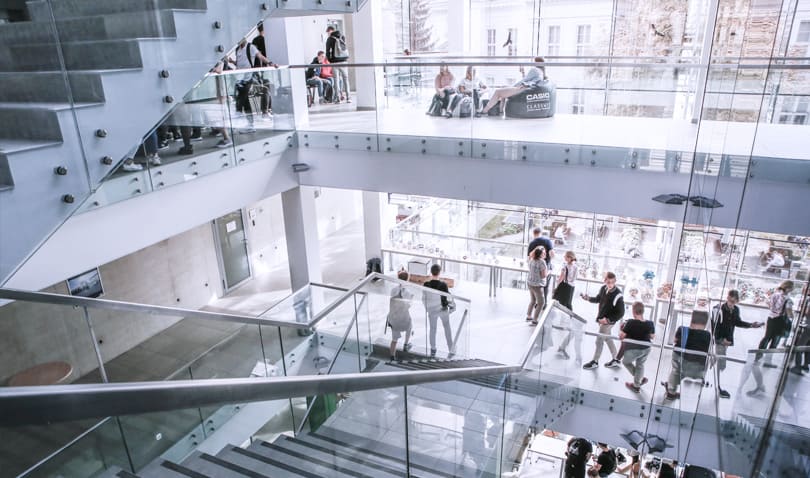
Since we did not want to create a hard and heavy block, we designed a glazed and transparent building. A building which is not a firm barrier and provides for the flow of space through it filling its interior. It works as a mirror reflecting neighbouring architectural facilities and trees. The block of the building changes depending on neighbouring facilities.
